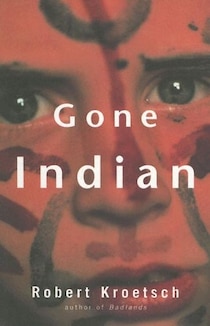I am returning to Robert Kroetsch for the next two reviews. This review will cover Gone Indian (and is review 7 of 13). Gone Indian is arguably Kroetsch's first "post modern" novel, sort of foreshadowing What the Crow Said, Alibi and above all The Puppeteer. What makes a post modern novel? I'm very rusty on my literary theory, but generally it means a many-layered story (maybe with more than one framing device) where the core events are not "stable" -- in the sense that they may be viewed or described from many perspectives. That in itself is not unknown in conventional literature (Durrell's Alexandria Quartet is a classic example, though at least a few critics have said that it is in fact a proto-post modern novel or rather a suite of novels), though post modern novels usually take it further and events may be completely reversed when told and retold from these varying perspectives and it is unclear what actually "happened" (very much in the spirit of Rashomon, and there is certainly a case that Rashomon is also post modern rather than high modernist art because it refuses to posit one of the narratives as the "truth"). Post modern novels usually take the concept of the unreliable narrator to extremes. The Studhorse Man certainly has an unreliable narrator (who writes from his bathtub in a mental institution!), but Gone Indian does raise the bar since there are basically two unreliable narrators that are attempting to converse or at least make connection throughout the narrative. It is very unclear how the chief narrator (Dr. Madham) could know most of the events in the novel (as it seems unlikely that the second one would have actually committed so much to tape), so the reader is left wondering how much has simply been invented and filled in. One of the downsides of post modern novels is that they tend to be so intent on cleverness and game-playing that the characters are more obviously pawns being pushed around than in conventional fiction where the reader is expected to care about what happens to them. It is not uncommon for characters' motivations to be unclear or unstable in post modern fiction. I definitely feel this happens in The Puppeteer (which I am wrapping up now). Perhaps the best known example of post modern literature is Paul Auster's The New York Trilogy.
Gone Indian begins with a letter from Professor Madham to Jill Sunderland. It explains that Jeremy (the main character of Gone Indian) was a doctoral student out east who headed to Alberta to try to wrap up his dissertation. The rest of the book is sort of compiled from notes, letters and cassette tapes that Jeremy used for dictation and mailed back to his wife and/or Dr. Madham, though it should be noted that Madham pops up from time to time, adding his observations to the action. However, the tone is completely reversed from the conventional wrappers around works like Dracula or Frankenstein for instance. The Professor admits flat out that he disliked Jeremy and call him a terrible student. He then goes on to admit he is sleeping with Jeremy's abandoned wife! What an opening.
The action as related to the Professor begins with Jeremy heading off on a job interview. He is bringing his dissertation with him in a desperate attempt to finish it somehow along the way; thus proving to himself, if not the hiring committee, that he isn't a total failure. He often addresses the professor directly (through the medium of the cassette tapes) and sometimes insults him back and sometimes just seems sorry for himself. In any event, Jeremy's suitcase has been switched with Roger Dorck's. It also so happens that Roger Dorck was the reigning Winter King of the Notikeewin Winter Festival. He also went out on the fresh ice on a snowmobile, crashed through and is lying in a coma. Without thinking about it too much, Jeremy decides to take over Roger's role, though it isn't exactly the case that people think he is Roger. It can be a little hard to follow exactly why they let him take over as Winter King and judge the beauty pageant (this is probably the best set piece in the book). Later, Jeremy seems to want to take on the role of a Native Indian.
He takes up with several women throughout the course of the book. If I am not mistaken, he seduces or is seduced by both Roger's mistress and her daughter. But he tries to escape (on a different snowmobile) with yet a third woman. I suppose this demonstrates to me one of the drawbacks to postmodern fiction -- the stakes end up being lower and you often can't recall the plot even only a few months down the road. It's an interesting read, but it does pale in comparison to The Studhorse Man. Johnny Backstrom, MLA makes an actual cameo in this book when Jeremy and a few others crash at his funeral parlor and start up an epic card game (epic card games are definitely a recurring theme in Kroetsch's work). Johnny offers to let Jeremy sleep it off in a coffin, but then midway through the night he needs the coffin for Roger. At least Jeremy didn't end up buried alive. It might be after this "rebirth," that Jeremy decides to turn his back on his old life for good, setting up the ending when he tries to escape into a blizzard. At least that's how I remember it now. ;)

No comments:
Post a Comment